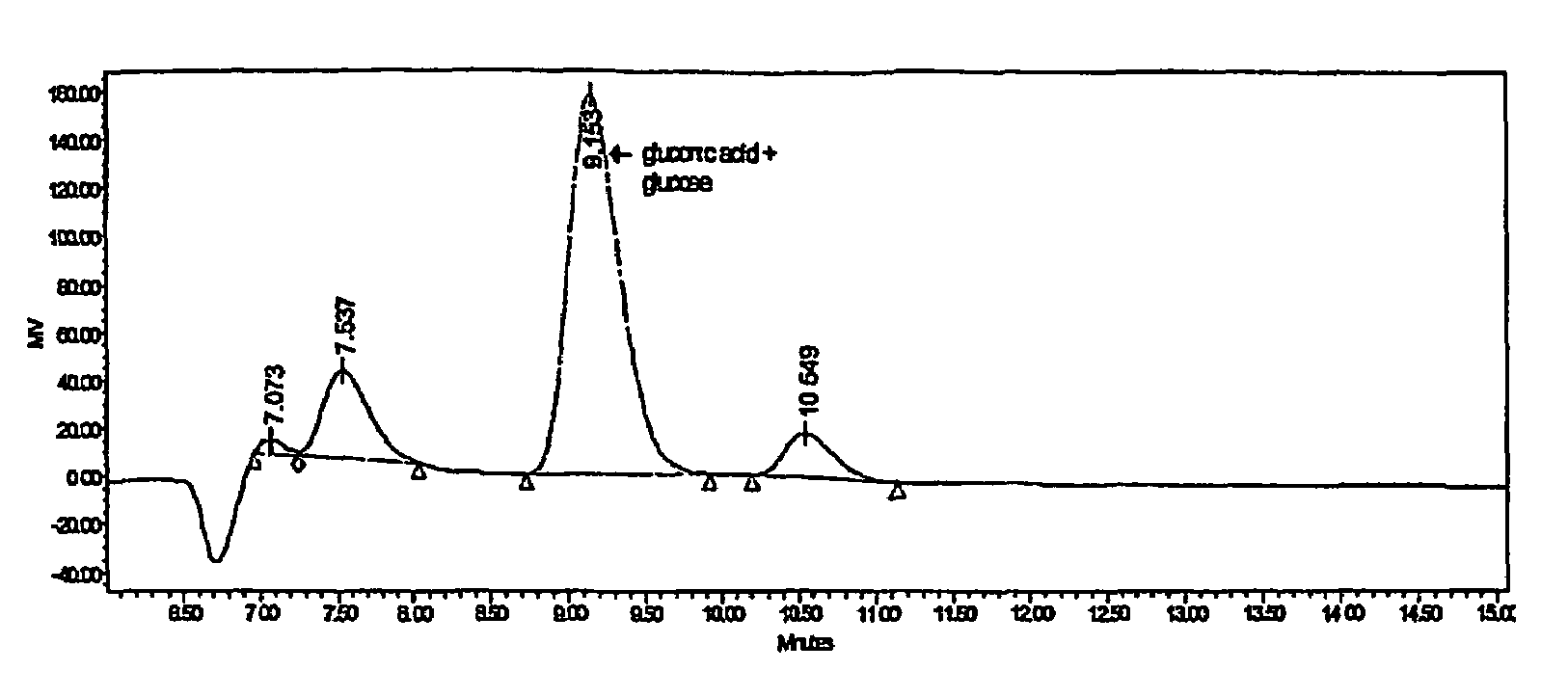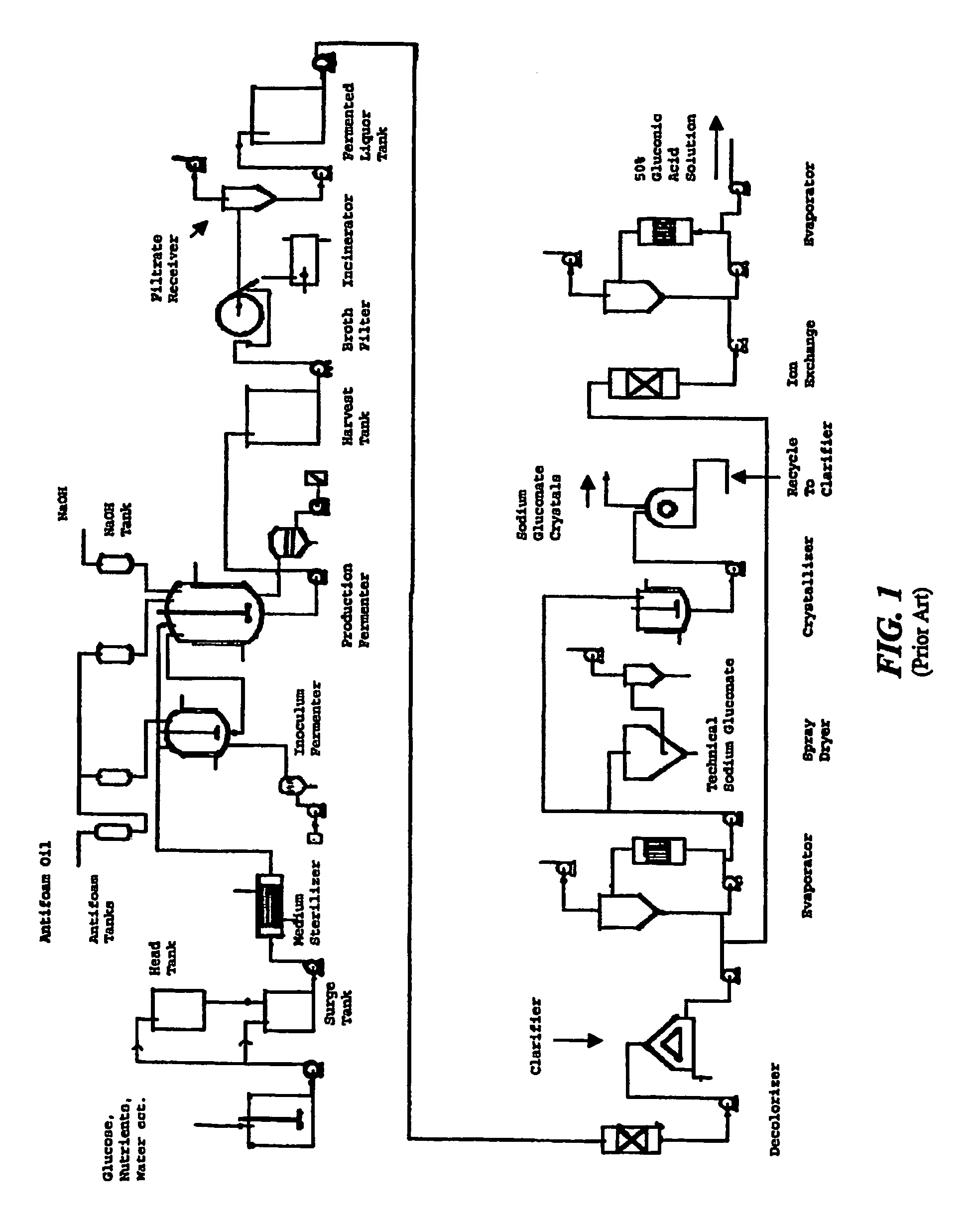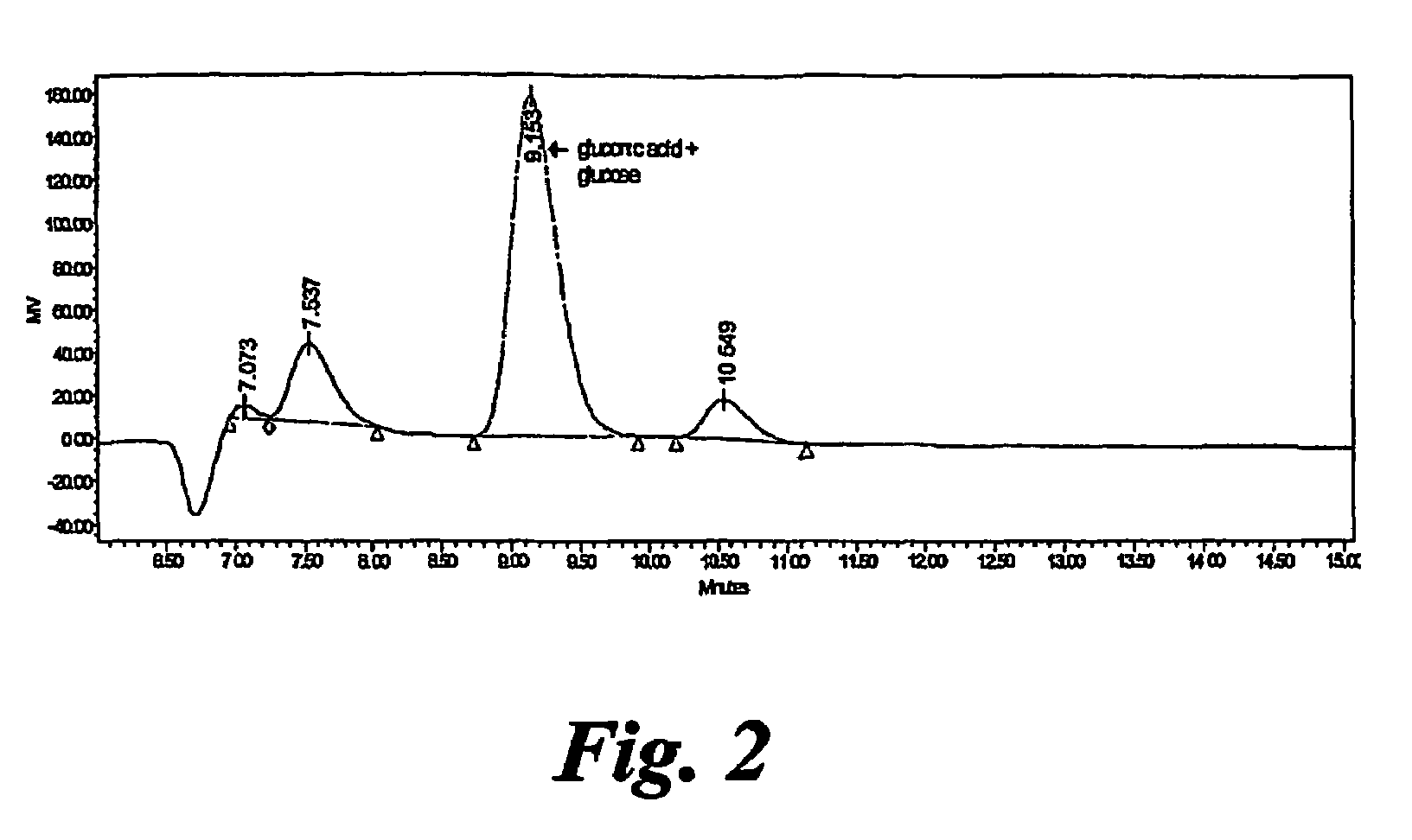Gluconate broth for cement and concrete admixture
a technology of cement and concrete, which is applied in the field of gluconate concrete admixtures, can solve problems such as excessive darkening of the medium
- Summary
- Abstract
- Description
- Claims
- Application Information
AI Technical Summary
Benefits of technology
Problems solved by technology
Method used
Image
Examples
example 1
[0062]Crude intermediate fermentation broths containing gluconate were obtained from PMP Fermentation Products, Inc. (Peoria, Ill.) and Jungbunzlauer International AG (Basel, Switzerland).
[0063]The following materials, which are believed to represent examples of the crude intermediate fermentation broths contemplated for use in the present invention are as follows. “Broth 1” was an unfiltered broth obtained from PMP. “Broth 2” was an unfiltered and concentrated broth obtained from Jungbunzlauer. “Broth 3” was a filtered and concentrated broth obtained from Jungbunzlauer. These samples were believed to have been obtained from the industrial glucose fermentation process (similar that illustrated in FIG. 1) at some point after the production fermentation such that the decolorizer and clarifier were not used on the fermentation broth, but before the fermentation was subjected to spray drying or ion exchange (see FIG. 1 after “Evaporator” step).
[0064]Each of the three sample broths where...
example 2
[0073]Another sample (“broth 4”) supplied by PMP, which was deemed equivalent to broth 3 above, was analyzed by proton NMR spectroscopy. Broth 4 is a concentrated acidic broth. Proton NMR spectra of broth 4 and of a pure sodium gluconate solution are provided, respectively, in FIGS. 4 and 5.
[0074]As seen in FIG. 4, the proton NMR spectrum of broth 4 indicates approximately 2% unconverted glucopyranose, plus 6-9% of side reaction products (not characterized). It is estimated that other isomeric forms (e.g. lactone) of glucose fermentation by-product are present.
example 3
Concrete Testing
[0075]Broth samples were also tested in concrete in accordance with ASTM C 192 (Standard Practice for Making and Curing Concrete Test Specimens in the Laboratory), ASTM C 143 (Standard Test Method for Slump of Hydraulic-Cement Concrete), ASTM C 39 (Test Method for Compressive Strength of Cylindrical Concrete Specimens), ASTM C 403 (Standard Test Method for Time of Setting of Concrete Mixtures by Penetration Resistance).
[0076]The properties of interest in the testing were 9-minute slump, water-reduction, air content of the fresh concrete paste, initial set-time, and compressive strength. The concrete testing conditions were as follows. Dosage of broth was 0.06% solids (neutralized material) by weight of cement, which was Type I Ordinary Portland Cement (conforming to ASTM C150 Standard Specification for Portland Cement). Cement Factor=307 kg / m3, Coarse aggregate=1062 kg / m3, W / C ratio=0.677 and 0.658 (approximately 5% water-cut).
[0077]The broth samples used are as foll...
PUM
| Property | Measurement | Unit |
|---|---|---|
| pressure | aaaaa | aaaaa |
| volume | aaaaa | aaaaa |
| volumes | aaaaa | aaaaa |
Abstract
Description
Claims
Application Information
 Login to View More
Login to View More - R&D
- Intellectual Property
- Life Sciences
- Materials
- Tech Scout
- Unparalleled Data Quality
- Higher Quality Content
- 60% Fewer Hallucinations
Browse by: Latest US Patents, China's latest patents, Technical Efficacy Thesaurus, Application Domain, Technology Topic, Popular Technical Reports.
© 2025 PatSnap. All rights reserved.Legal|Privacy policy|Modern Slavery Act Transparency Statement|Sitemap|About US| Contact US: help@patsnap.com



